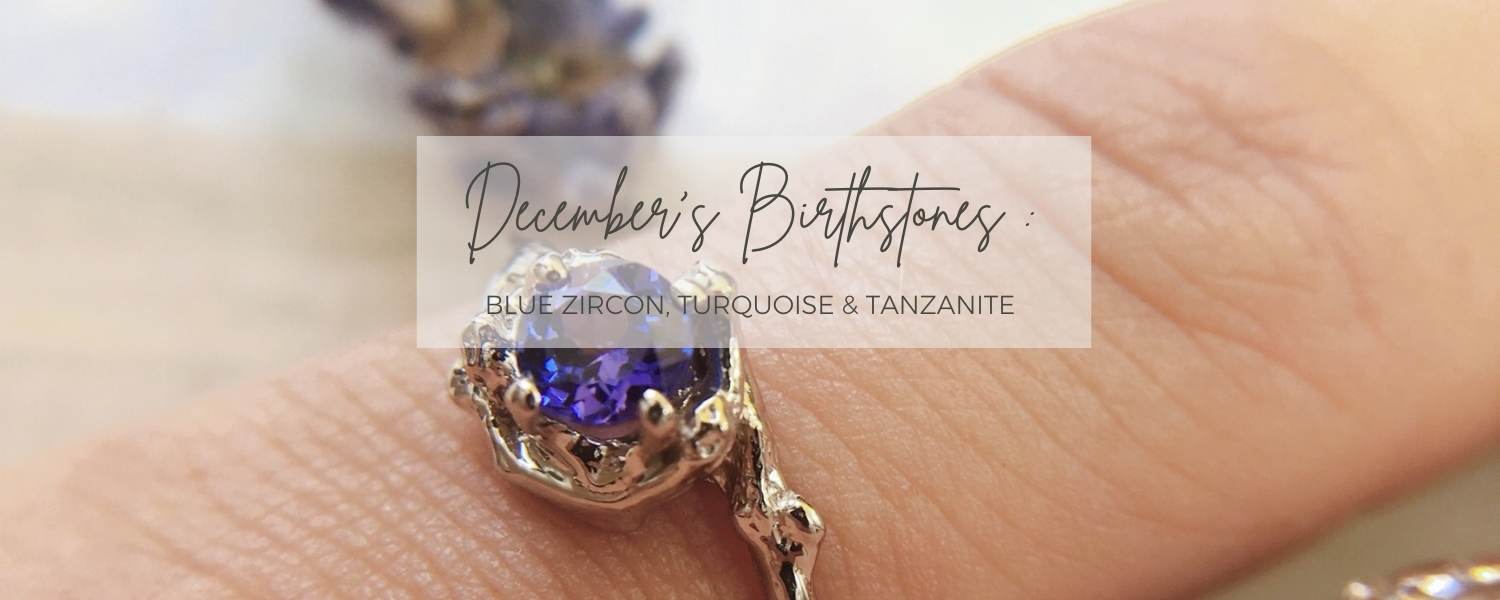16th Dec 2022
View Post
ALL ABOUT DECEMBER'S DARLING STONES
December is a month of holly jolly joy. The lights twinkle a bit brighter, the air feels crisp and clear, and the holidays' unmistakable spirit is in the air. And if you are lucky to have a birthday in December, the month seems to glow even more magically.
But what is the December birthstone and what is its spiritual significance? Keep reading to find out!
HOW MANY BIRTHSTONES DOES DECEMBER HAVE?
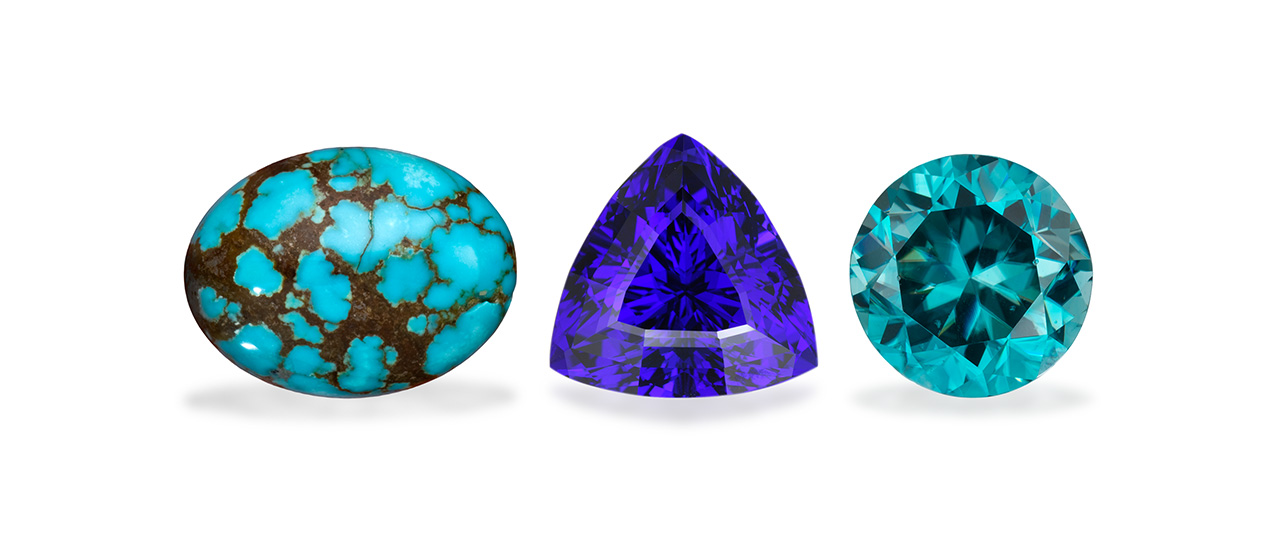
Like those born in June, August, October, and November, December babies have more than one birthstone to choose from their birth month.
Why?
December has multiple birthstones in an effort to democratize and equalize the public ability to afford and maintain the brilliant blue gemstones of December. The first December birthstone, turquoise was assigned as the official December birthstone in 1912 by the National Association of Jewelers. However, brilliant turquoise is known to be relatively fragile, thanks in part to its porosity. In response, the National Association of Jewelers added Blue Zircon as an alternative December birthstone in 1952.
Then, around 50 years ago, tanzanite was discovered in Tanzania and quickly rose to prominence thanks to its stunning blue color and relative affordability. For this reason, it was added as the third and final December birthstone in 2002.
WHAT ARE DECEMBER'S BIRTHSTONES?

As mentioned above, December has three birthstones: turquoise, zircon, and tanzanite. Each of these stunning December birthstones has its own unique history, characteristics, and special spiritual meaning. There are also pros and cons to each so you'll want to do your research before deciding on which December birthstone is right for you.
THE DECEMBER BIRTHSTONE: TURQUOISE
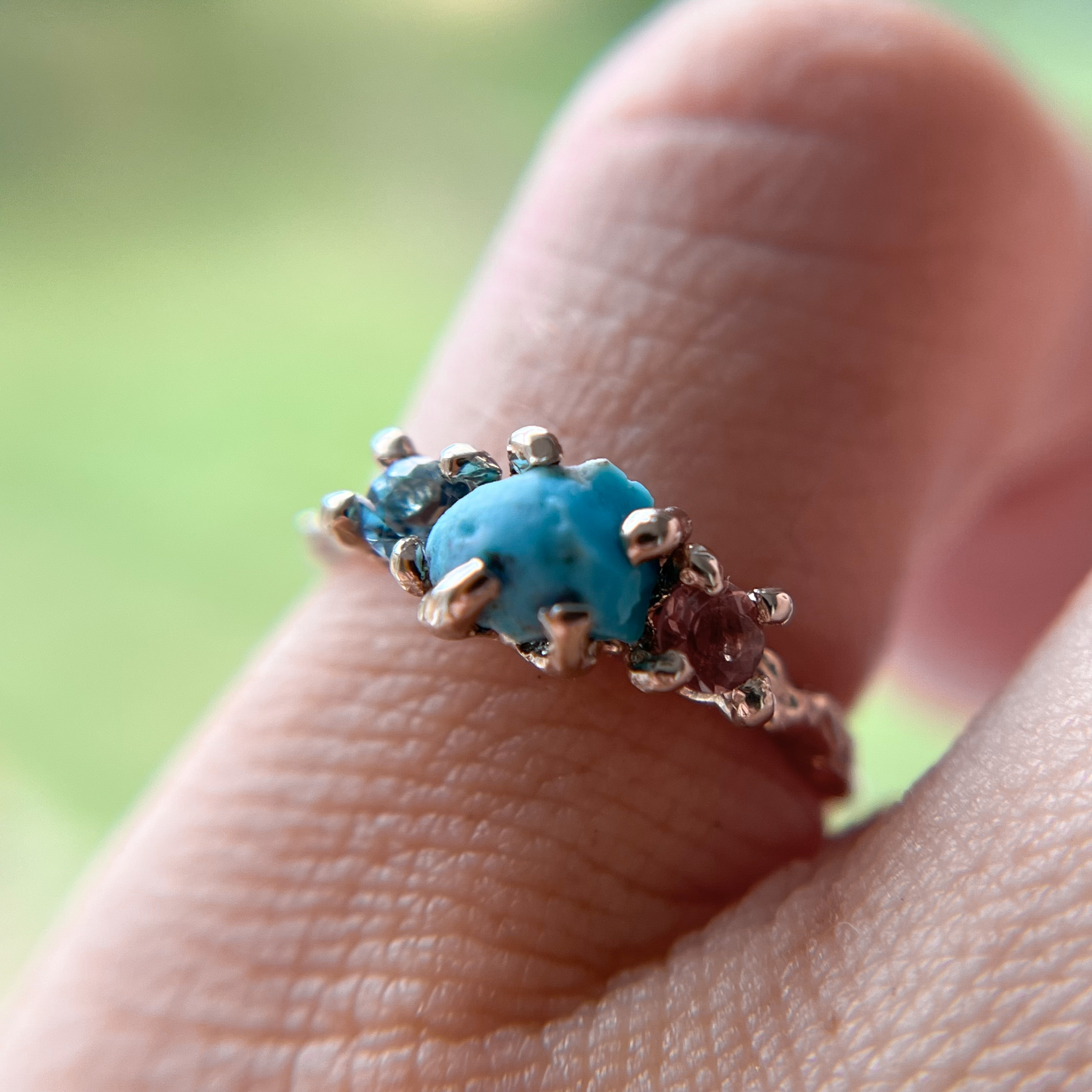
Turquoise, the first of the December birthstones, is an excellent choice for those who are looking for a light robin's egg blue color and are willing to take extra care of their gemstone.
Characteristics of turquoise
Turquoise is a beautiful, opaque robins egg blue to green stone that is usually found in the southwestern part of the United States. Turquoise can be found in other parts of the world such as China and Russia but it is rare to find quality turquoise outside of the U.S.
The color of turquoise depends on where it was mined and how deep it was buried underground. The deeper the mine goes, the darker and richer the color will be because it absorbs more light over time.
The mineral turquoise is formed when copper, aluminum, or iron minerals mix with water in a hot environment. The resulting blue color is due to a chemical reaction between the metals and water. Because turquoise forms in thin layers and isn't very dense, it can easily break or chip when dropped or knocked against something hard.
ANCIENT BELIEFS ABOUT TURQUOISE
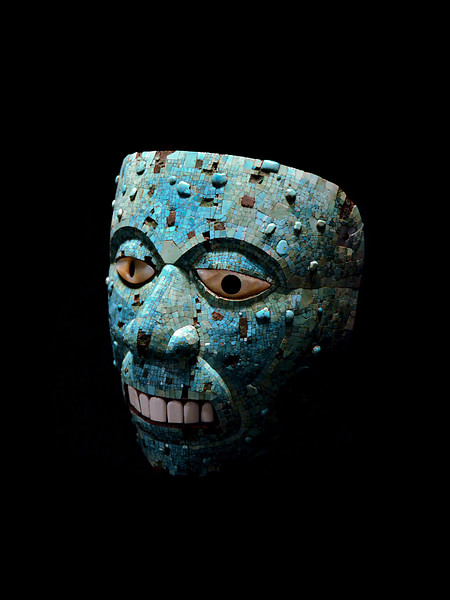
The Ancient Egyptians called turquoise, mefkat, which translates to "joy" and "delight". They were the first ones to mine turquoise as evidence points back to turquoise jewelry existing during 3000 BC.
Turquoise was also a symbol of power and prosperity in Egypt. It was used as an amulet for protection against evil spirits and jealousy by both men and women. It was also used in the making of statues that were placed in tombs to protect them from harm. They often set turquoise within gold necklaces, used it as inlay, and carved it into scarab beetles.
The Ancient Persians believed turquoise all but guaranteed protection and would adorn daggers and their horse's bridals with it believing that it would change color when they were in danger. Additionally, turquoise was viewed as an earthly connection to the heavens and would often decorate the roofs of palaces and mosques.
Ancient Mesoamerica was considered the most desired gemstone of all and was associated with gods such as the fire god, Xiuhtecuhtli. In fact, Xiuhtecuhtli was also referred to as "The Turquoise God". Mesoamerica received all of its turquoises through trade, and used it within votive offerings and often depicted gods wearing the blue gem.
In the Southwestern US, Native American's utilized the art of turquoise jewelry to symbolize turquoise's significance in their daily life.
The Acoma Pueblo believed the art of creating turquoise and shell beads was information passed down to them through the Great Creator- Iatiku. CertainNative American tribes believed that turquoise represented strength, skill, and invincibility. The Zuni and Navajo tribes felt that turquoise was connected to the sky and the water and utilized it in their art and jewelry.
SPIRITUAL BELIEFS ABOUT TURQUOISE TODAY
Today, turquoise is still considered an important stone by many different people around the world. It is often used as a symbol of healing and protection, and it is believed to bring good luck and prosperity to those who wear it.
Additionally, turquoise is believed to have the ability to connect mind, body, and spirt some one can be more intune with their physicality and spirituality.
Top 3 TIPS FOR BUYING TURQUOISE
To ensure the turquoise you buy is high-quality and will last you as long as possible. Keep the following three things in mind.
- Turquoise can be treated via stabilization or chemicals to ensure that its color maintains its vibrant hues over time. This can be important as natural, untreated turquoise will lose its hue as the years pass. So, it's important to ask your jeweler if the turquoise you're interested in buying has been treated to preserve color. This will ensure that you have accurate expectations of your jewelry as it ages and can take the correct steps to take care of it and preserve it.
- On the Mohs scale, turquoise can range from a 2 to 6. And while all turquoise jewelry should be ranked a 6, often, this is not the case. Ask to see certification of the turquoise jewelry hardness. Even if it is at a 6, remember to take care of your turquoise by never exposing it to extreme heat or cold and wash gently with warm soapy water.
- Because turquoise is so fragile, if you are purchasing a turquoise ring be sure to set it securely within a bezel or 6-prong setting. This way, your jewelry can be protected against any unfortunate bumps or accidents. When not wearing your turquoise jewelry, secure it safely in a jewelry box.
THE DECEMBER BIRTHSTONE: BLUE ZIRCON
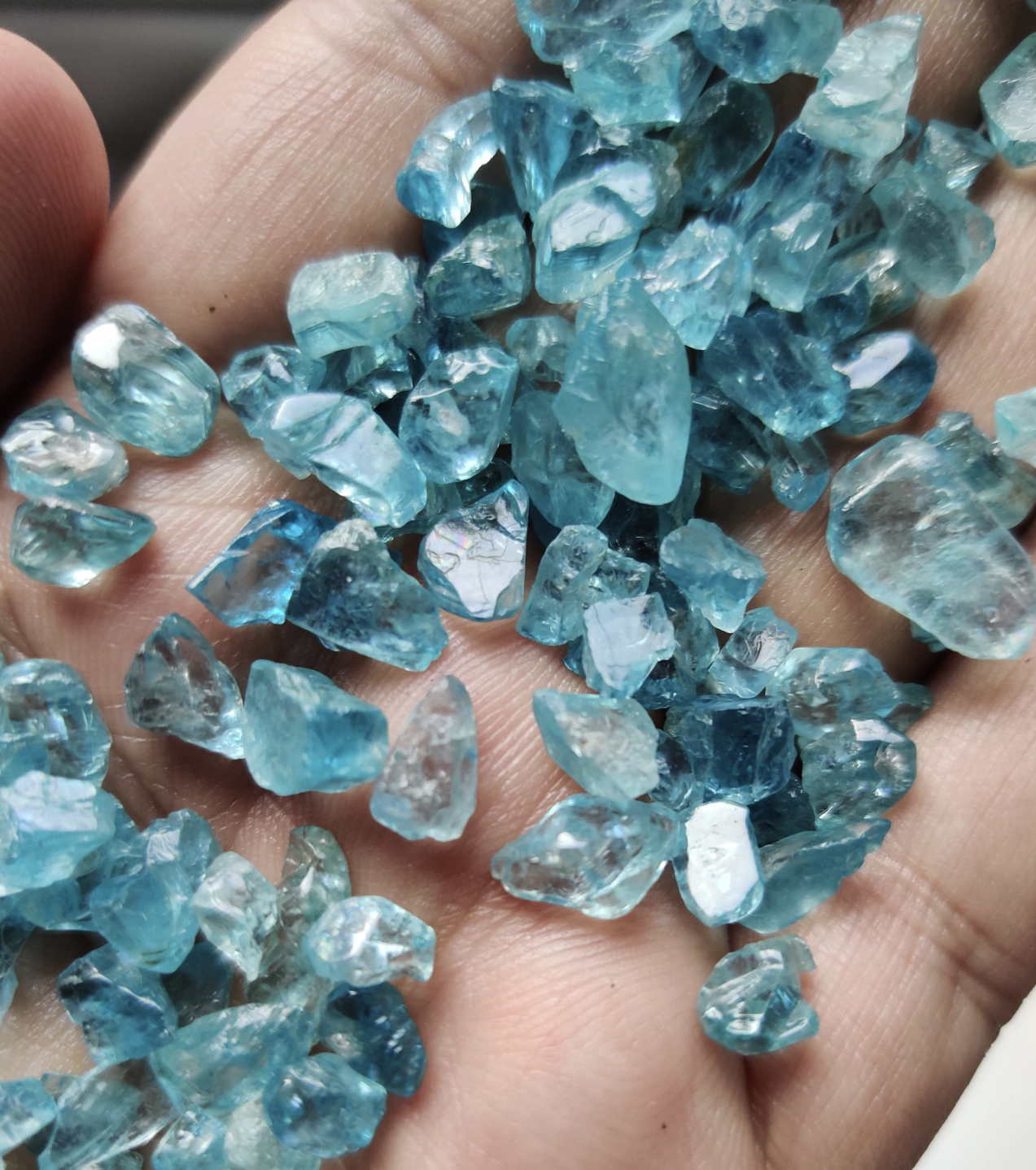
Of all the birthstones for December, blue zircon is probably the most misunderstood. Often confused with cubic zirconia, zircon is actually one of the oldest materials on earth and has the beauty and lustre to match any diamond.
Characteristics of zircon
Zircon is the oldest gemstone on earth and has been found and dates back 4 billion years. Zircon has a wide range of colors, from blue-green to yellow, red to brown. The color of zircon is determined by the mineral's composition, which includes metals like titanium and iron.
When the elements contained in zircon are exposed to radiation, they produce coloration in the mineral. This process is called "photoluminescence," which means that light is produced through energy transfer.
Zircon gets its blue-green color from traces of uranium and ruthenium. Red zircons contain hafnium and vanadium, while green ones have chromium. Yellow zircons contain cerium, while brown ones have niobium and tantalum. Colorless zircon lacks the coloration that zircon is normally known for and is often confused with diamonds.
THE HISTORY OF BLUE ZIRCON
Ancient people believed that the zircon was a stone that could protect them from evil spirits. It was also thought to bring good luck and happiness.
They believed it had magical powers, and would wear it in jewelry as a talisman to ward off evil spirits.
The ancient Greeks also believed that the zircon would protect them from evil spirits and curses. In fact, they even referred to it as "the shield of Achilles," because they thought it could protect them from harm.
Hindu poets wrote about the famed Kalpa tree, a gift to the gods that bore zircon in all of its beautiful colors.
During the Middle Ages zircon was believed to bring restful sleep, prosperity, and humor to its wearer in addition to helping prevent pain.
MODERN SPIRITUAL BELIEFS ABOUT BLUE ZIRCON
Today, it’s said that wearing zircon jewelry can help protect you from evil eye, as well as bring good luck and wealth. The mineral is also believed to ward off bad spirits, so it's often used in rituals where people are trying to protect themselves from negative energy.
In some cases, zircon has been used for its healing properties by people who believe it can help them feel better physically or emotionally. For example, if someone is feeling sad or depressed, they might wear a necklace made out of zircon in order to feel less down on their luck.
TIPS FOR BUYING BLUE ZIRCON

When you're buying zircon, there are a few things to keep in mind. Here are the top three tips for buying zircon:
- Buy from reputable sources. Zircon is a beautiful gemstone that is often used in jewelry. It can be found at many different stores, but it's important to remember that not all of these stores have reputations for selling high-quality gems. This is especially true if you're shopping online! Try asking your friends for recommendations on where they buy their zircon, or do some research online—you'll find plenty of reviews from other customers who've already bought from the store you're looking at.
- Check out the color and clarity of the stone. The best way to check the quality of any gemstone is by looking at its color and clarity. Zircon should be deep blue with no visible flaws or inclusions (flaws inside), like cracks or bubbles. If you can see flaws on the surface of the stone, it means there are likely more underneath as well!
- Be aware that zircon is very dense stone. Zircon is incredibly dense. This means that the carat size of blue zircon will look smaller than other gemstones of similar carat weights (like sapphire). To circumvent this, focus on purchasing based off of millimeter and not carat.
THE DECEMBER BIRTHSTONE: TANZANITE
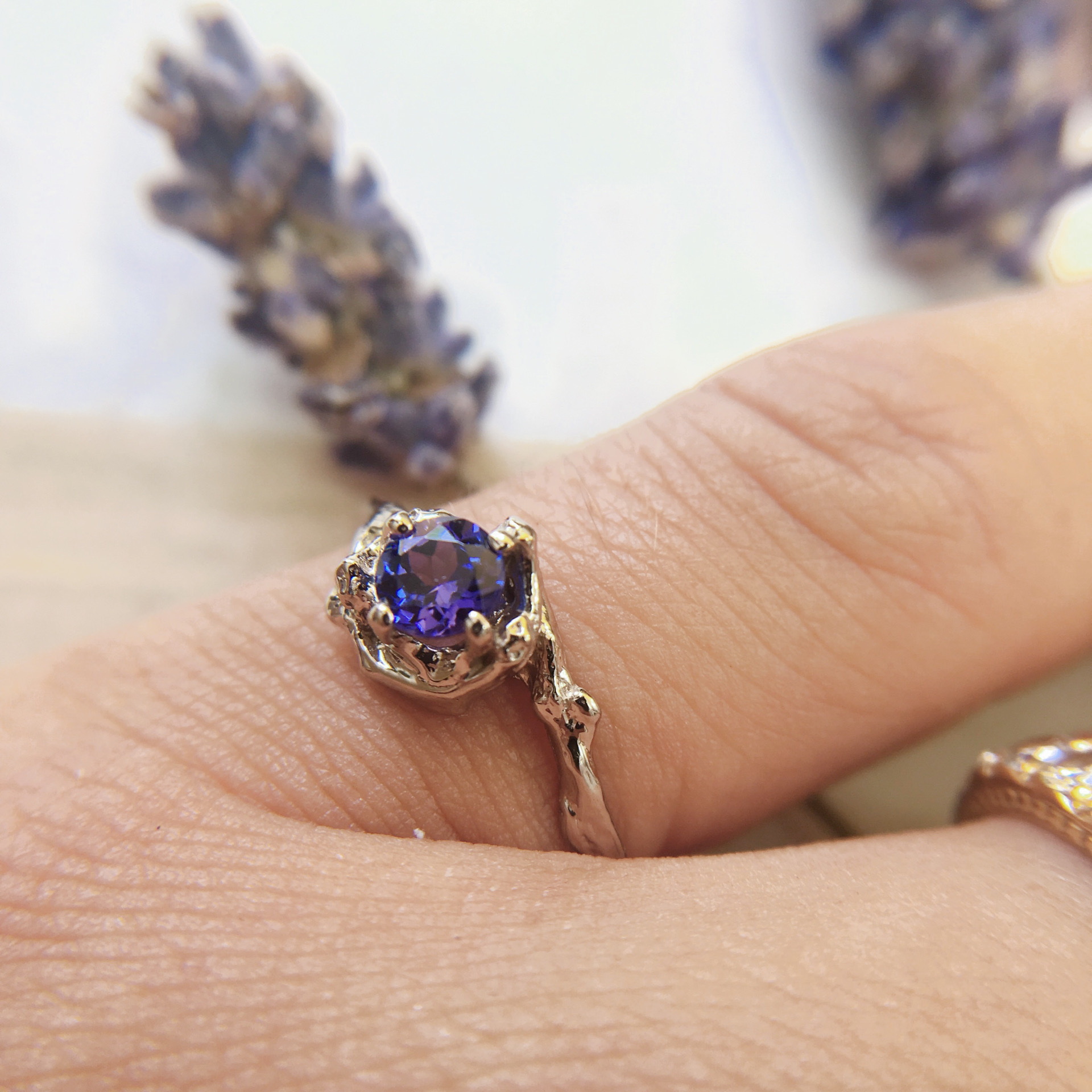
The final December birthstone- tanzanite is an impressive turquoise to violet stone that shimmers and shines in a league of its own.
Characteristics of tanzanite
Tanzanite is a beautiful blue-purple gemstone that is found only in one place on Earth: Tanzania.
It's not as hard as sapphire or emerald, but it's harder than the other gems in its family—the tourmalines. It has a hardness of 7.5-8 on the Mohs scale, which means you need to use something like a leather eraser to scratch it.
Tanzanite is made up of aluminum, sodium, iron, and other elements that are common in the earth's crust. The mineral is found in certain rock formations called schists and gneisses. These rocks have been altered by heat and pressure over millions of years, which is what gives tanzanite its unique coloration.
The word "tanzanite" comes from Tanzania, where it was first discovered in 1967.
THE HISTORY OF TANZANITE
Tanzanite is a gemstone that was first discovered in 1967 near the village of Mererani in Tanzania's Mererani Hills. As the story goes, a group of Maasai herders found the blue gemstones while tending to their livestock in the hills. They went on to notify a prospector who quickly registered the claim with the government to begin mining.
Since then, over 2 million carats of tanzanite has been mined resulting in a 2012 study that claims the tanzanite deposits may very well be depleted in 30 years or less.
TANZANITE TODAY
Tanzanite is known as the "Stone of Tranquility." People who wear this gemstone believe that it helps them find peace and enlightenment, and they often use it to help them find solutions to their problems.
Some people believe that wearing tanzanite helps them achieve spiritual balance because it symbolizes beauty and wisdom. In addition to this, it can help bring about feelings of happiness within the wearer because it reminds them how precious life really is when we take time each day just sit back and enjoy each other's company (even if we're not physically together).
TIPS FOR BUYING TANZANITE
With its brilliant hues, tanzanite is a stunning choice for any December birthstone ring. Follow these three tips to ensure you get the best tanzanite for your money!
- First and foremost, remember that tanzanite is only mined in one place: Tanzania. While there are other places that produce similar gems with different names (like morganite or hessonite), they don't have quite the same look or feel as real tanzanite. So if you're looking for something truly unique, check out what Tanzania has to offer! When in doubt, ask your jeweler to produce the origin of certificate of the tanzanite you are looking to purchase.
- Tanzanite is a relatively clear stone so you should always aim to buy a flawless stone. Tanzanite should be clear with no visible imperfections. Inclusions may not be visible to the naked eye but can show up under magnification.
- Be aware that virtually all tanzanite has been heat treated to increase its color. While it is possible to find turquoise tanzanite or similar lighter-hued tanzanite stones, it will surely be more of a process.
OLIVIA EWING JEWELRY OFFERS THE BEST BIRTHSTONE RINGS

Whether you are looking for turquoise, tanzanite, or zircon, you are sure to find a stunning December birthstone ring at Olivia Ewing Jewelry. Our unique three and four birthstone rings are as stunning as they are durable and are destined to become a family heirloom to be passed from one generation to the next.


